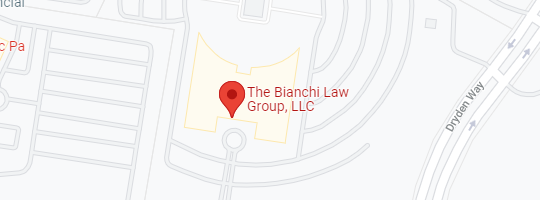
On February 10, 2017, Bianchi Law Group Partner David J. Bruno appeared on Fox News’ Fox and Friends First to discuss the recent 9th Circuit Court of Appeals decision which refused to reinstate President Donald Trump’s Travel Ban Executive Order after a Washington District Court suspended the Executive Order.
Currently at issue is a Constitutional challenge to the President’s Executive Order (EO), which generally targets three groups:
1. Citizens from seven Muslim-majority countries, who are barred from entering the United States for at least 90 days. This includes Iran, Iraq, Libya, Somalia, Sudan, Syria, and Yemen.
2. Refugees from any country, who are blocked from entering the United States for the next 120 days;
3. Syrian refugees, who are barred indefinitely.
Last week, a Washington District Court Judge granted the State(s) of Washington and Minnesota a temporary restraining order (TRO) to stop the President’s Executive Order nationally, until the full case can be decided in the District Court.
Instead of fully litigating the case in the Washington District Court, the US Government appealed the TRO to the 9th Circuit Court of Appeals. The US Government basically asked the court to stop the Washington District Court TRO, which stalled the Executive Order.
First, in the 9th Court of Appeals written decision, the Court found that the State of Washington and Minnesota had standing to challenge the Executive Order through their public college students and teachers.
Next, the Court disagreed with the US Government’s argument that the President’s decisions about immigration and national security are not reviewable. On that point, the 9th Circuit said a reviewing Court owes deference to the President with respect to Immigration and National Security, but not absolute deference.
Finally, the Court denied the US Government’s application for a stay of the District Court’s TRO. In this analysis, the 9th Circuit Court of Appeals used the same four-part test that the District court used to grant the TRO in the first place. That is;
1. Likelihood of success on the merits
2. Irreparable harm absent a stay
3. Whether issuance of stay will substantially harm others interested
4. Where the public interest lies
 On the issues of likelihood of success on the merits, the 9th Circuit Court of Appeals said the US Government failed to show the likelihood of success on the Due Process Claim. Specifically, that the Executive Order failed to provide certain Due Process protections and did not provide protected parties with notice and opportunity to be heard. Additionally, the Court heavily relied on the Executive Order’s natural language that prohibited the re-entry of legal permanent residents from the 7 banned counties. The Court came to this conclusion notwithstanding that the President, through White House Counsel, announced that the US Government is not enforcing the Executive Order against those legal permanent residents. The Court also expressed concerns about the challenges that the Executive Order unconstitutionally discriminates against a religion. However, they did not reach a conclusion about the likelihood of success on the merits. They noted they will come to that conclusion when the matter is fully argued on the merits.
On the issues of likelihood of success on the merits, the 9th Circuit Court of Appeals said the US Government failed to show the likelihood of success on the Due Process Claim. Specifically, that the Executive Order failed to provide certain Due Process protections and did not provide protected parties with notice and opportunity to be heard. Additionally, the Court heavily relied on the Executive Order’s natural language that prohibited the re-entry of legal permanent residents from the 7 banned counties. The Court came to this conclusion notwithstanding that the President, through White House Counsel, announced that the US Government is not enforcing the Executive Order against those legal permanent residents. The Court also expressed concerns about the challenges that the Executive Order unconstitutionally discriminates against a religion. However, they did not reach a conclusion about the likelihood of success on the merits. They noted they will come to that conclusion when the matter is fully argued on the merits.
On the issue of Irreparable harm, the 9th Circuit Court of Appeals found that the US Government did not show irreparable harm if the stay wasn’t granted. In fact, the Court criticized the Department of Justice for not showing any evidence that individuals from the 7 banned countries were responsible for any acts of terrorism in the United States.
Finally, the Court found that the States of Washington and Minnesota did provide evidence of harm and that the public has very important issues at play. Namely, that the protective persons have the right to travel freely and that the President and our Country has an interest to protect the national security of our County.
What happens next?
 First, the US Government can file a petition of certification to request an appeal to the United States Supreme Court. They can also ask for an en banc reconsideration which means they get a rehearing before 11 of the 27 9th Circuit Court of Appeals Court judges. If not, the appeal to the 9th Circuit Court of Appeals will continue as the Court has set a briefing schedule for the parties throughout the month of March. Finally, President Trump and the US Government can redraft and replace the Executive Order to remedy the potential problems with the Executive Order.
First, the US Government can file a petition of certification to request an appeal to the United States Supreme Court. They can also ask for an en banc reconsideration which means they get a rehearing before 11 of the 27 9th Circuit Court of Appeals Court judges. If not, the appeal to the 9th Circuit Court of Appeals will continue as the Court has set a briefing schedule for the parties throughout the month of March. Finally, President Trump and the US Government can redraft and replace the Executive Order to remedy the potential problems with the Executive Order.
If I were counseling the President, I would advise him to redraft and replace the Executive Order. In that case, he could clarify the protections for legal permanent residents, provide notice and opportunities for procedural due process to detained or affected parties with Constitutional Rights. These two issues in the Executive Order are the biggest vulnerabilities in the Order and the US Government’s chances would greatly improve if these issues were clarified.
UPDATE: Late Friday, a 9th Circuit Court of Appeals judge filed a motion sua sponte (on its own motion by the Court) to have an en banc vote with all 27 judges in the 9th Circuit Court of Appeals. According to the 9th Circuit en banc Process which is published by the Court, if the vote fails to obtain a majority, the panel shall resume control of the case and no further en banc action is required. G.O. 5.5(c). The panel will enter an order rejecting the petition for rehearing or rehearing en banc. G.O. 5.4(b)(1). If a majority of the judges vote in favor of rehearing or rehearing en banc, the Chief Judge shall enter an order taking the case en banc pursuant to Circuit Rule 35-3. G.O. 5.5(d). Currently, Ninth Circuit has 27 active judges. Thus, a majority would require 14 votes in favor of rehearing en banc. See G.O. 5.5(d).











